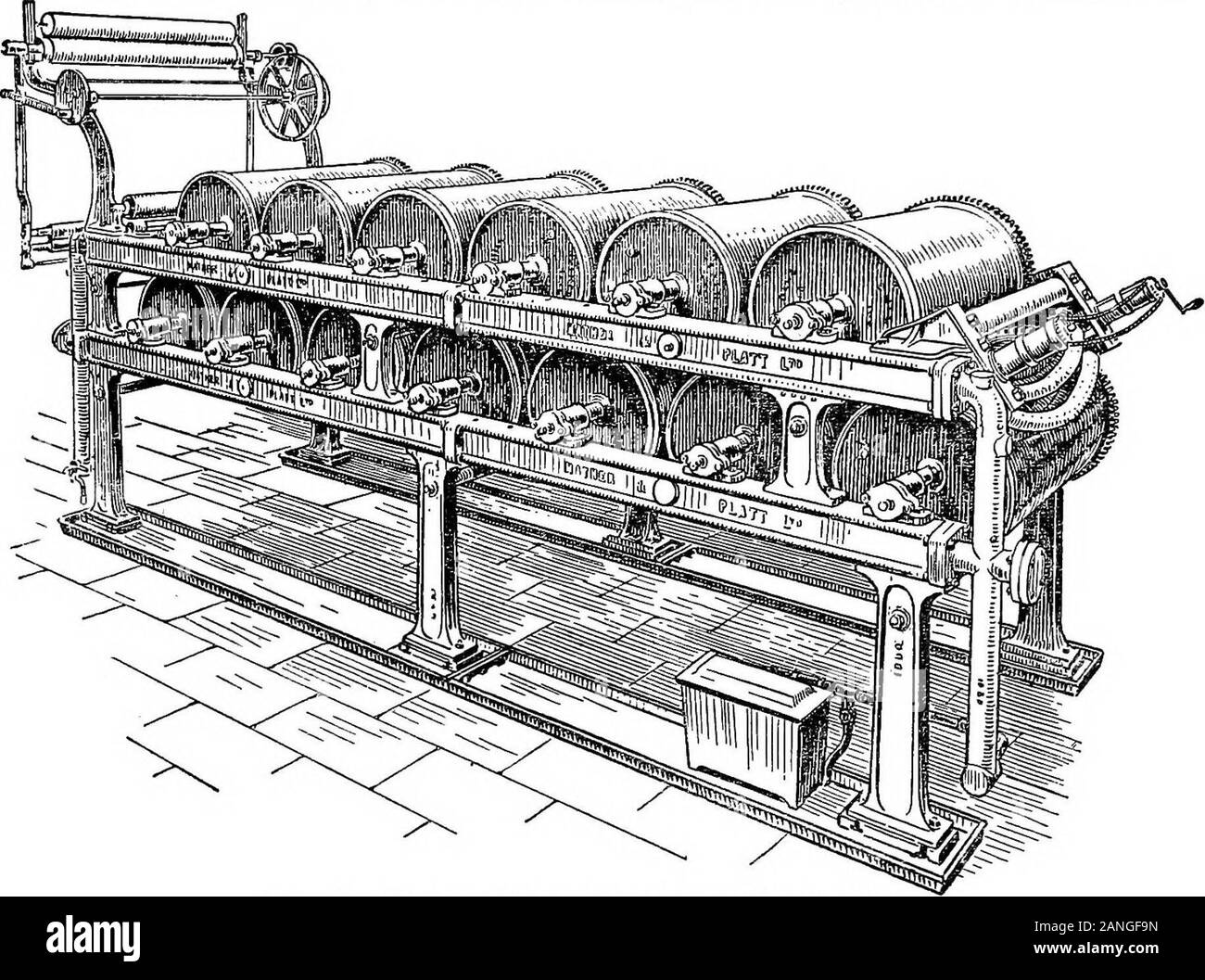The encyclopdia britannica; a dictionary of arts, sciences, literature and general information . acellular sub-stances and a peculiar wax known as flax wax, are moredifficult to attack than those which are present in cotton, andthe difficulty is still further enhanced in the case of piecegoods owing to their dense or impervious character. Till towards the end of the i8th century the bleaching of linenboth in the north of Ireland and in Scotland was accomplishedby bowking in cows dung and souring with sour milk, the piecesbeing exposed to light on the grass between these operations forprolonged

Image details
Contributor:
The Reading Room / Alamy Stock PhotoImage ID:
2ANGF9NFile size:
7.1 MB (594.5 KB Compressed download)Releases:
Model - no | Property - noDo I need a release?Dimensions:
1832 x 1363 px | 31 x 23.1 cm | 12.2 x 9.1 inches | 150dpiMore information:
This image is a public domain image, which means either that copyright has expired in the image or the copyright holder has waived their copyright. Alamy charges you a fee for access to the high resolution copy of the image.
This image could have imperfections as it’s either historical or reportage.
The encyclopdia britannica; a dictionary of arts, sciences, literature and general information . acellular sub-stances and a peculiar wax known as flax wax, are moredifficult to attack than those which are present in cotton, andthe difficulty is still further enhanced in the case of piecegoods owing to their dense or impervious character. Till towards the end of the i8th century the bleaching of linenboth in the north of Ireland and in Scotland was accomplishedby bowking in cows dung and souring with sour milk, the piecesbeing exposed to light on the grass between these operations forprolonged periods. Subsequently potash and later on soda 54 BLEACHING was substituted for the cows dung, while sour milk was replacedby sulphuric acid. This natural bleach is still in use inHolland, a higher price being paid for linen bleached in this waythan for the same material bleached with the aid of bleachingpowder. In the year 1744 Dr James Ferguson of Belfast receiveda premium of £300 from the Irish Linen Board for the appKcationof lime in the bleaching of linen. Notwithstanding this reward.. Fig. 8.—Mather & Piatts Horizontal Drying the use of lime in the bleaching of linen was for a long timeafterwards forbidden in Ireland under statutory penalties, and solate as 1815 Mr Barkhe, a respectable linen bleacher of LinenVale, near Keady, was prosecuted for using lime in the whiten-ing of linens in his bleachyard. The methods at present employed for the bleaching of linenare, except in one or two unimportant particulars, the same aswere used in the middle of the 19th century. In principle theyresemble those used in cotton bleaching, but require to be fre-quently repeated, while an additional operation, which is a relicof the old-fashioned process, viz. that of grassing or croft-ing, is still essential for the production of the finest whites.. Considerably more care has to be exercised in linen bleachingthan is the case with cotton, and the process consequentlynecessitates a great